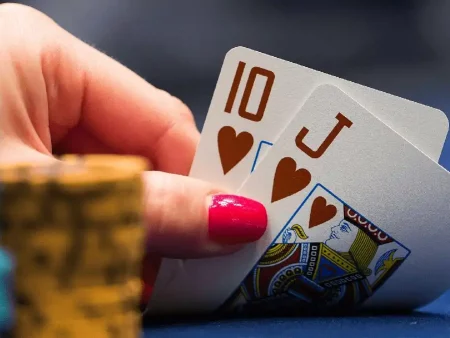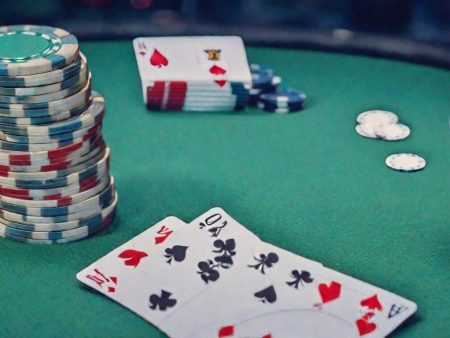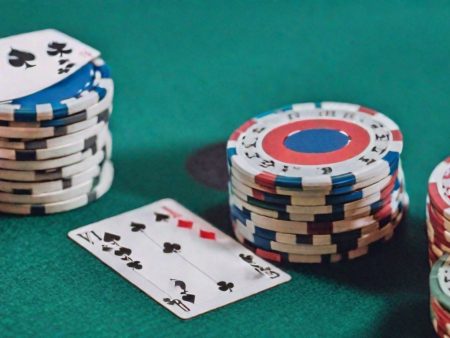In the world of poker, whether it’s Texas Hold’em or Omaha, every hand is a true strategic challenge. These games consist of four betting rounds, also called streets, and each one plays a role in the game. However, the most intense and often decisive round is the final one — the river. This is when the stakes get really high, and even a small mistake can cost you a significant amount of money.
The Final Card in a Hand
On all betting rounds except pre-flop, community cards are dealt. In Texas Hold’em or Omaha, three cards are revealed on the flop, one more on the turn, and the final, fifth card is dealt on the river. In other games, such as Stud, the structure is different, and the final round is also called the river, after which players reveal their hands to determine the winner.
The river is the moment of truth. Players still in the game reveal their hands, and the winner is decided based on the strength of their hand. However, just like on the earlier streets, it’s possible to win the pot without showing your cards, if you’re skilled enough to manage your bets and use aggression to force your opponents out. It’s important to note, however, that bluffing on the river is extremely risky. On this street, the stakes are high, and even a slight mistake could lead to serious losses that no casino bonus can compensate for.
How to Choose a Poker Room: Key Factors to Consider
When choosing a poker room, there are several key factors to consider. These include the bonuses offered, the activity on the playing field, the skill level of opponents, the availability of tournaments, and, of course, one of the most important aspects — the size of the rake. The rake in poker is the percentage of the total pot that the poker room takes as a commission for organizing the game and providing the platform for players.
What is the Rake?
The rake is the commission that the poker room takes from each poker pot. It is a percentage of the total amount bet in the game and is part of the costs that players incur to participate in poker games. The rake helps the poker room maintain the stability of the platform, ensure data security, and provide payment processing services (deposits and withdrawals).
Read also: What is a limp in poker.
Typically, the size of the rake depends on the game format and the stakes involved. In cash games, it is usually around 5% of the pot, while in tournaments, it is typically about 10% of the buy-in fee. Understanding how this percentage is calculated and the different types of rake is important for any experienced player.
How Does the Rake System Work?
When choosing a poker room, one of the most important factors is the size of the rake, as it directly impacts your playing strategy. The rake is also affected by the game format: the higher the stakes, the lower the rake percentage. This should be taken into account when selecting the right poker room. There are several different rake calculation systems:
- The “Deal” System — The rake is evenly split among all players who were dealt cards, regardless of their actions in the hand. This system was popular in the past but is now rarely used.
- The “Actual” Method — The winner of the hand pays the rake at the end, as a percentage of their winnings. This method also isn’t widely used.
- The “Contributed” Method — Only the players who contributed to the pot pay the rake, which is divided equally among them. While this method is fairer, it does not account for situations where players fold their cards.
- The “Weight Contributed” System — This is the most common and fair system, where the rake depends on how much money each player contributed to the pot. The more a player contributes, the higher their share of the rake.
What is SBR and How Does It Work?
SBR (System for Combating Regulators) is a modern rake system that takes into account the source of the player’s funds. If a player is using their own money, they pay less rake. If they are using their winnings, the rake percentage may be higher. This system is especially useful when players use funds from different sources (deposit vs. winnings).
For example, if two players contribute equal amounts to the pot, they might pay different rake amounts depending on which funds they use for the bet. If one uses their own funds and the other uses winnings, the rake distribution will differ.
The Innovative PVI System
PVI (Progressive Player Charge) is a more complex and innovative rake system that takes into account the skill level and activity of the player. In this system, the losing player not only pays the full rake but also influences how the rake is distributed based on their experience and game statistics. This makes the system more dynamic and fair, as experienced players might pay lower rake than beginners.
Read also: What is a gutshot in poker and how to play it correctly.
How Rake Affects Tournaments
In tournament poker, the rake is also a factor, and it is typically deducted from the buy-in fee. For instance, in most online tournaments, around 5-10% of the buy-in goes to the poker room as rake, while the remaining amount forms the prize pool. However, many poker rooms offer loyalty programs that allow players to get back part of the rake they paid. This can be a significant bonus for active players, helping to reduce the overall costs of playing.
When selecting a poker room, it’s crucial to consider factors related to the rake to make an informed decision. A good room will offer fair conditions with a low rake and convenient loyalty systems. It’s important to remember that the rake can significantly impact your long-term profitability, so make sure to choose your poker room wisely. Additionally, don’t forget to pay attention to the bonuses and player activity on the platform to make your gaming experience not only profitable but also enjoyable. Want to use math to increase your wins? Read the mathematical casino strategies blog and apply precise calculations in your bets!
FAQ: What is a rake in poker
What is a rake in poker?
A rake is a small fee or commission taken by the casino or poker room for hosting the game.
It is typically a percentage of the pot in cash games or a fixed fee from tournament buy-ins. The rake ensures the operator earns revenue to maintain the poker ecosystem.
How is the rake calculated in cash games?
In cash games, the rake is usually a percentage of the pot, capped at a maximum amount.
For example, a poker room might take 5% of the pot up to a $10 limit. The exact percentage and cap vary by casino or online platform.
What is the difference between a rake in cash games and tournaments?
In cash games, the rake is taken directly from each pot.
In tournaments, the rake is included as part of the buy-in fee. For instance, a $100+$10 tournament means $100 goes to the prize pool, and $10 is the rake.
Why do poker rooms charge a rake?
Rakes provide poker rooms with the revenue needed to cover operational costs, such as staff salaries, software maintenance, and facilities.
It ensures that the poker ecosystem remains sustainable while offering players a fair and secure environment.
Are there games without a rake?
Yes, some games, often called "rake-free" or "home games," do not charge a rake.
These games are typically hosted privately by individuals rather than by casinos or online platforms. However, rake-free environments might lack the same security and guarantees as professional poker rooms.
How does the rake impact players’ profits?
The rake reduces players' winnings since a portion of the pot or buy-in goes to the house.
Skilled players aim to minimize the impact of the rake by improving their edge over opponents and selecting games with lower rake percentages.
What is a rakeback, and how does it benefit players?
Rakeback is a system where players receive a percentage of the rake they’ve paid back as a rebate.
It is a common promotion offered by online poker platforms to reward loyal players, effectively reducing the cost of playing.






